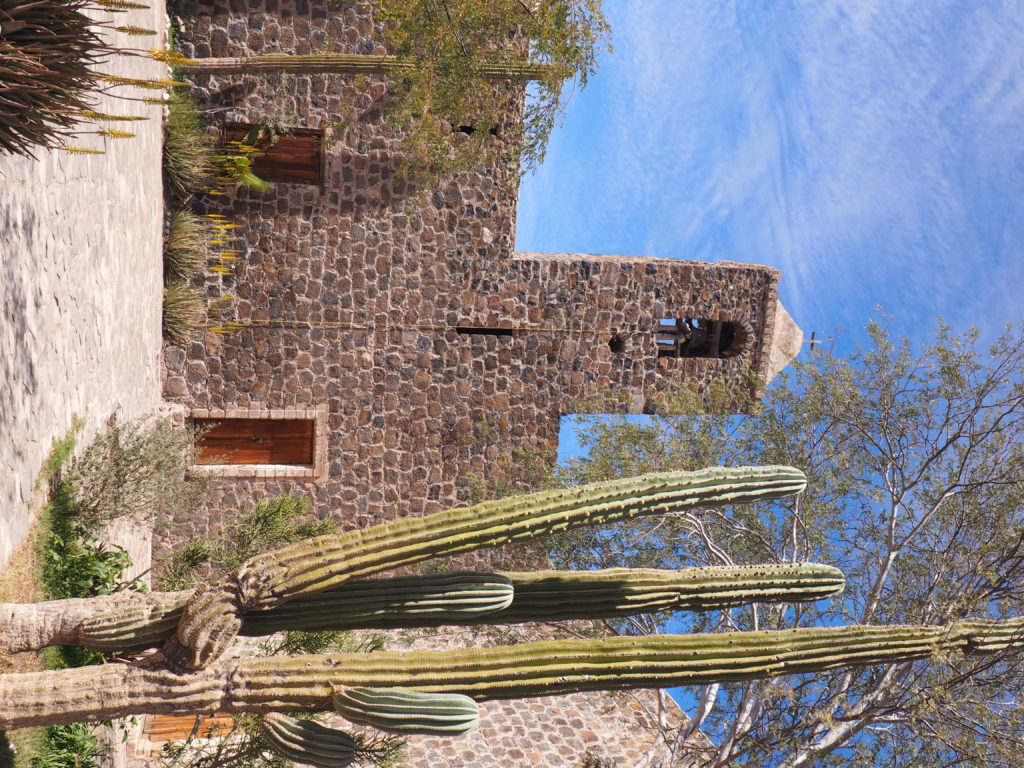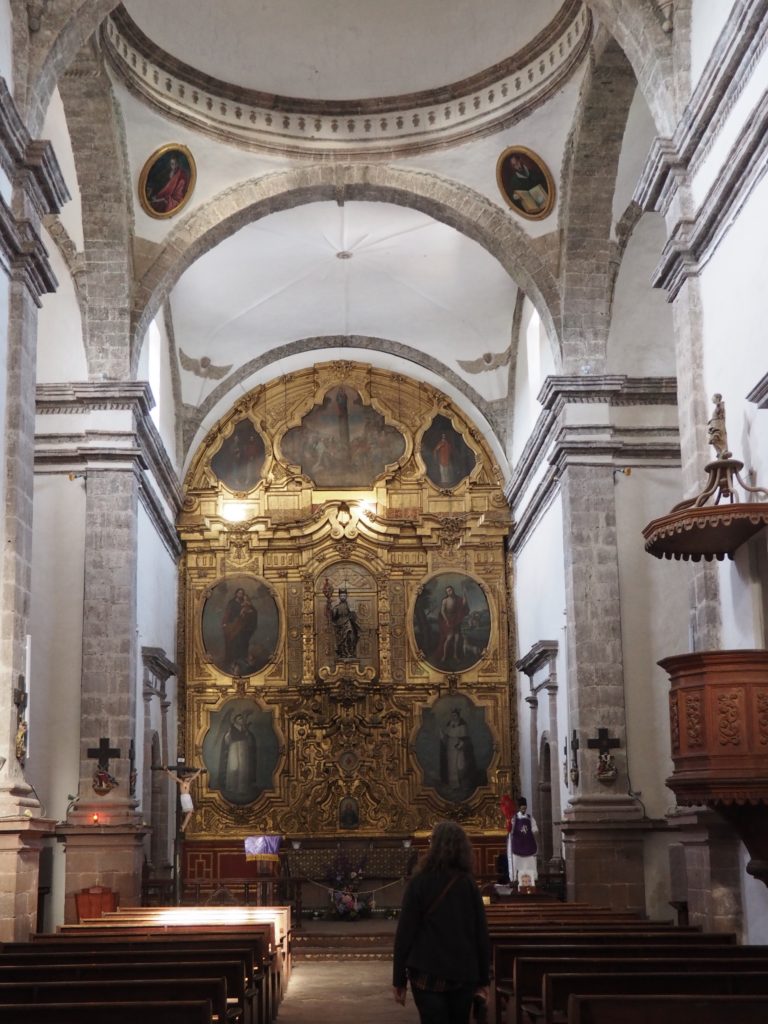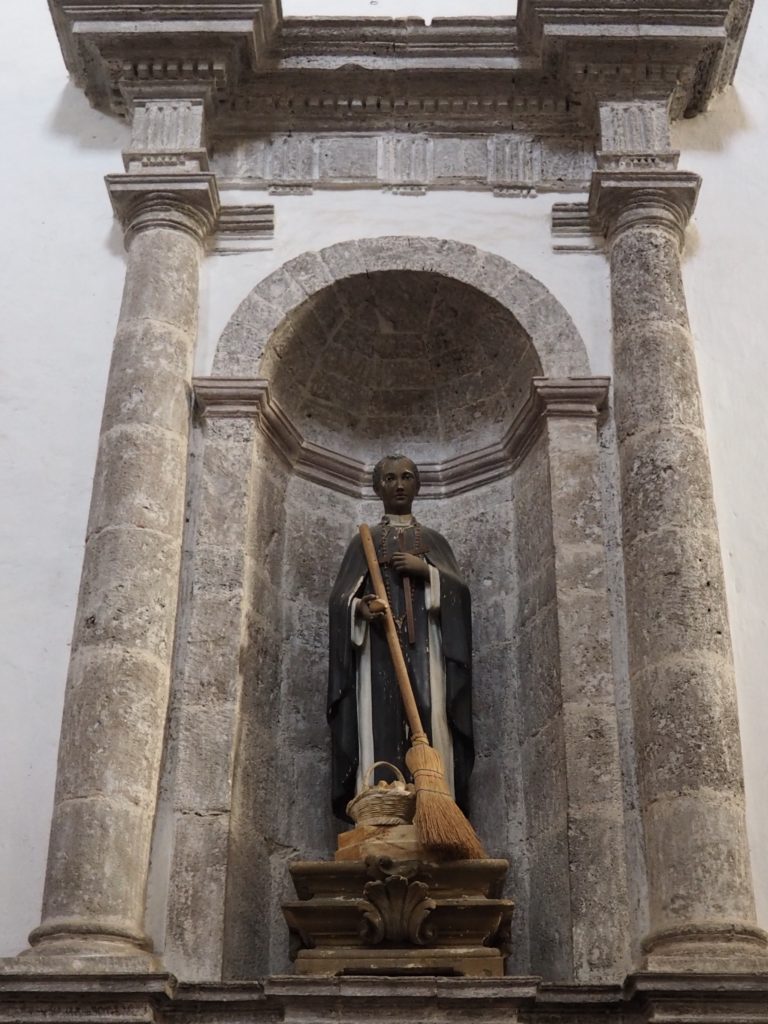Loreto Mission

The Loreto Mission, having been built in 1697, was in complete ruins. The parish priest long dreamed of reconstructing it and promised in his prayers that if he played and won the lottery he would use the money to rebuild the Mission. Obviously, he won. He also kept his promise to God. He kept asking the authorities in Mexico City to share the Mission’s plans from the archives of Jesuit records so that it could be faithfully reconstructed. They never responded. So, he proceeded to reconstruct the Mission the best he knew how, including the common feature of a bell tower. Once construction was completed, the authorities notified the priest that the newfound source of town pride must be demolished because the original Mission did not have a bell tower. However, the indignant community worked together to overturn the demolition order.
A local shopkeeper invited us to go up on the roof of his building to get a good photograph of the Mission. Glad we took him up on it. It’s the bell tower that makes it beautiful.
San Javier Mission
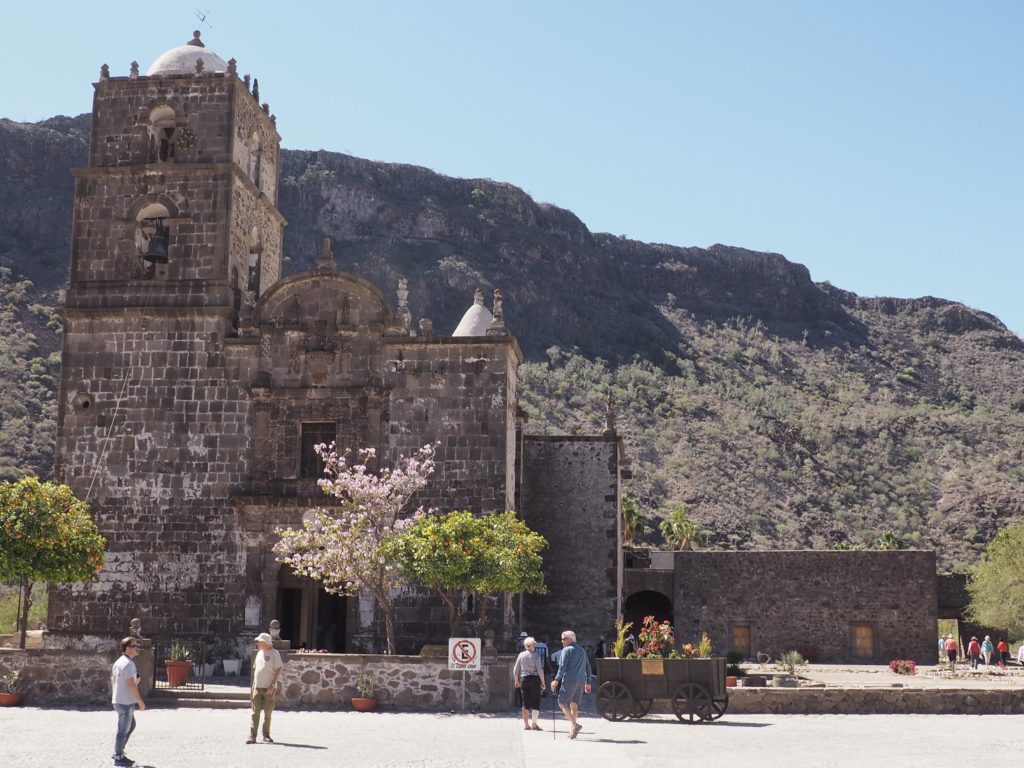
In 1699 the Jesuits founded their second mission in Baja California, San Javier.
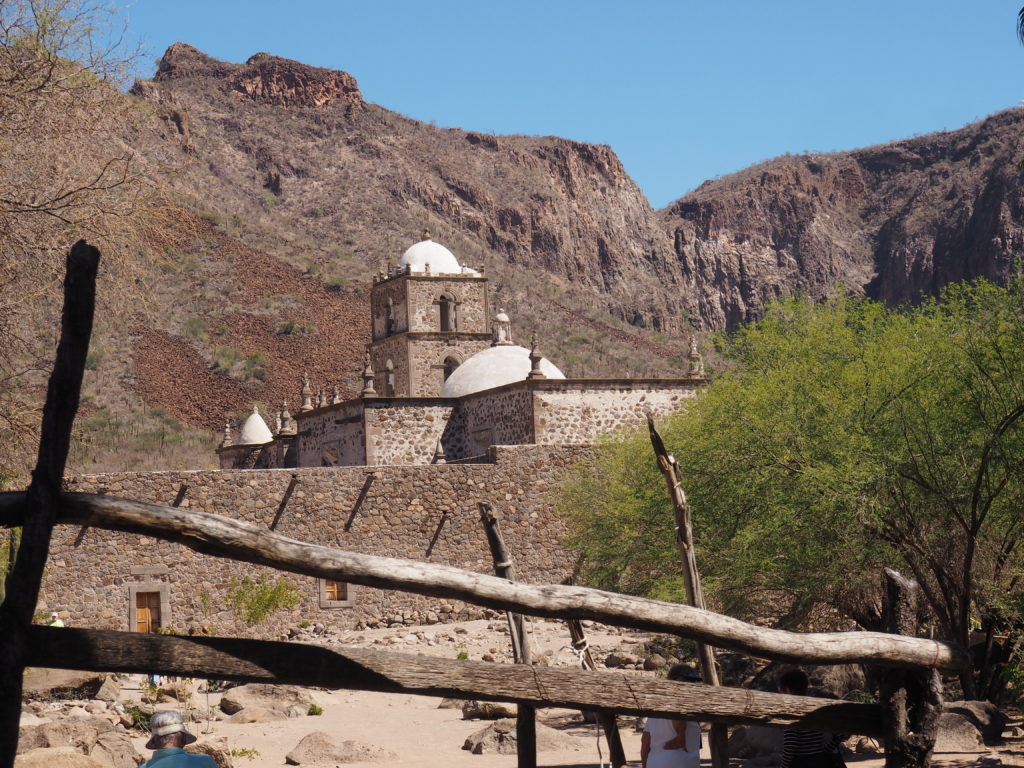
When the Jesuits arrived, the indigenous people (the Cochimies in the area of this Mission) were hunter gatherers with a Stone Age lifestyle. The Jesuits located their Missions where water was available for agriculture and started growing the crops important to them, namely figs, dates, olives, grapes, wheat, barley and pomegranate. They then recruited the native people as a labor force for both agriculture and for building the Mission itself, with the understanding that to be part of the agricultural age they must give up their traditional lifestyle and become part of the Mission community.

These alter pieces from Spain are 300+ years old, according to a friendly man from town.

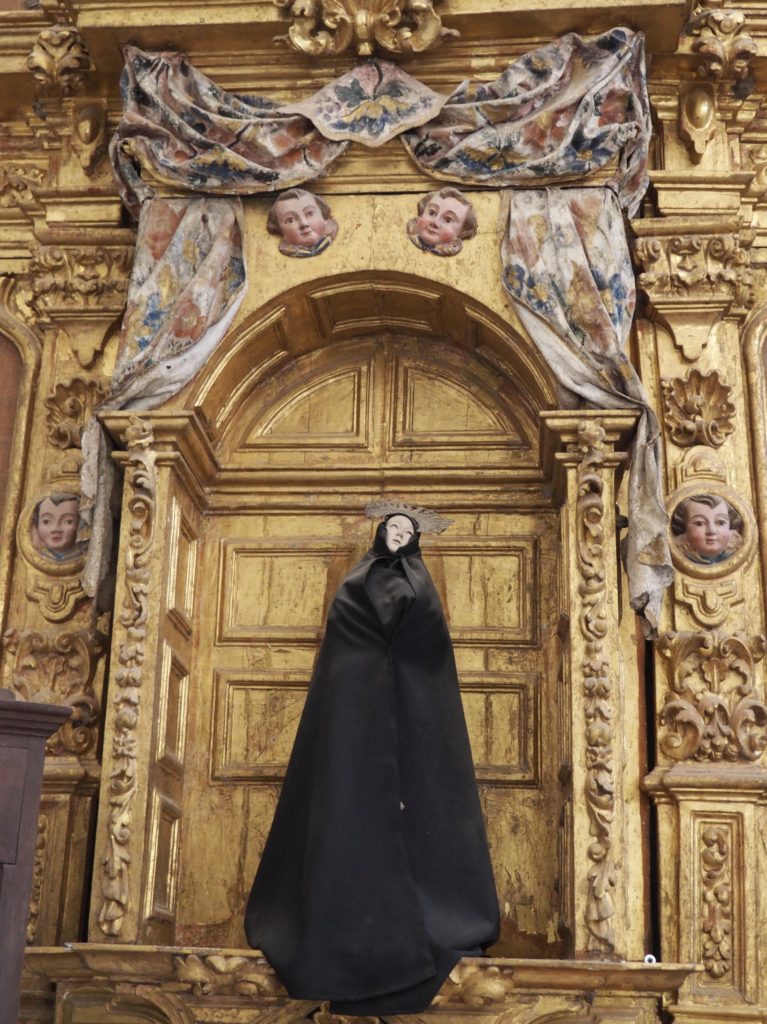
Saint Maria Delores
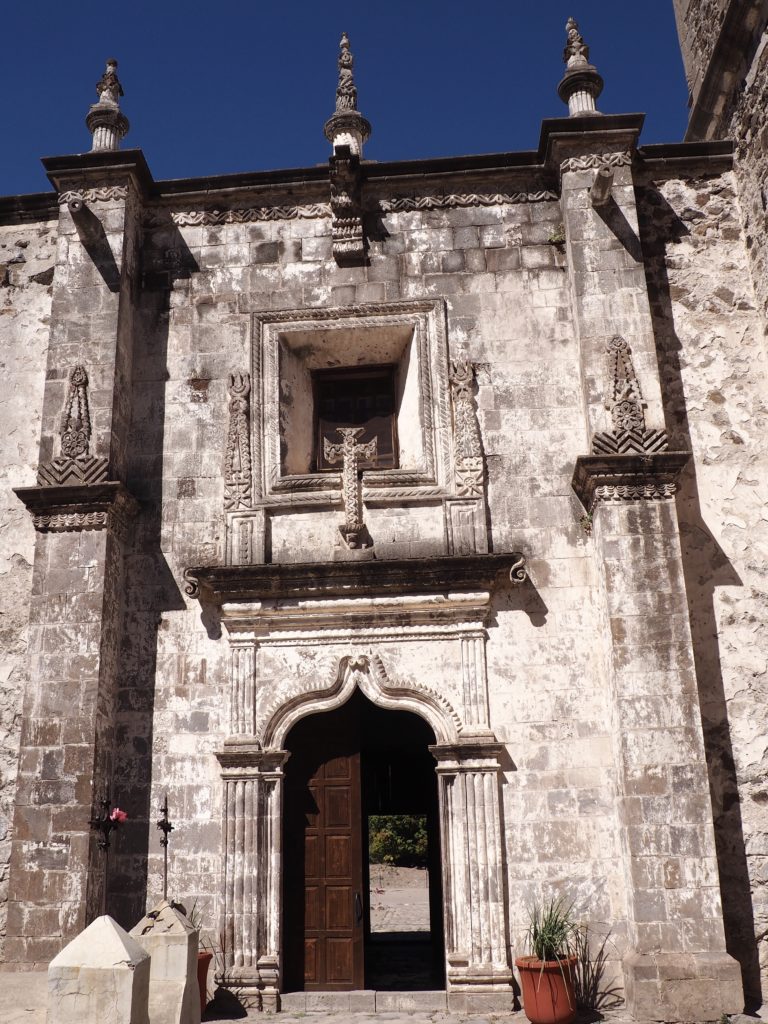
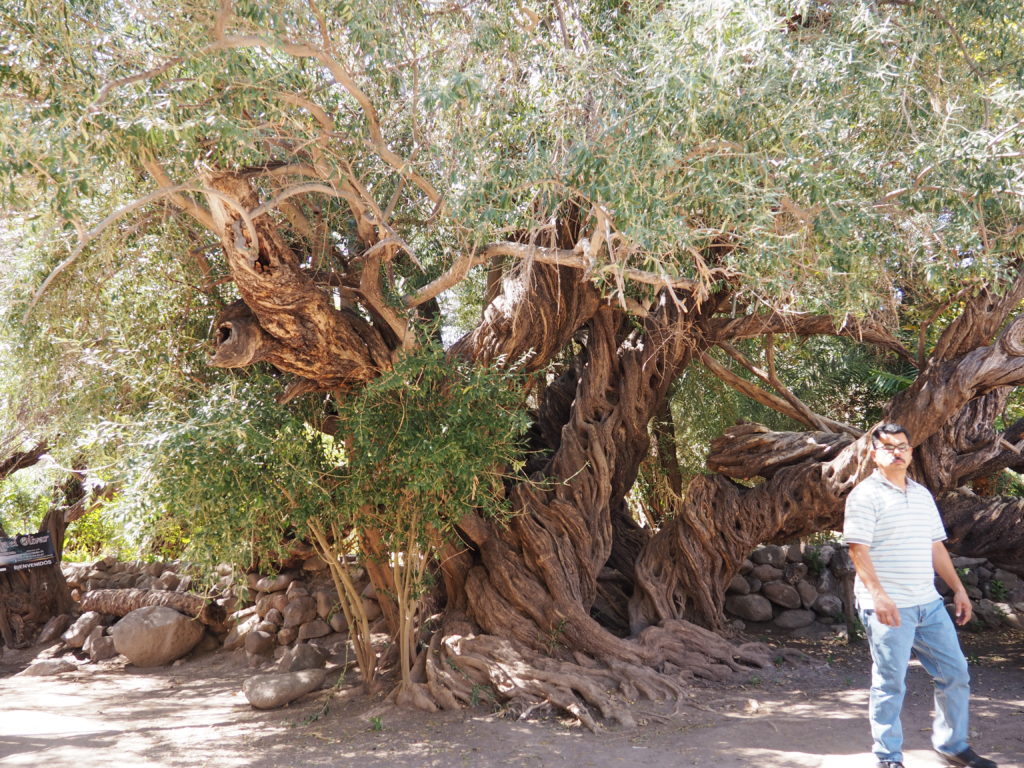
This very old olive tree survives from what had been the Jesuit’s orchard. People from the community use the grounds to grow a number of crops and take advantage of the water reservoir that’s been long established.
Santa Rosalia de Mulegé Mission

Founded in 1705, construction began in 1766. The native population dropped precipitously during the mission years, from 40 to 50,000 people on the peninsula to 2,000 due to European infectious diseases.
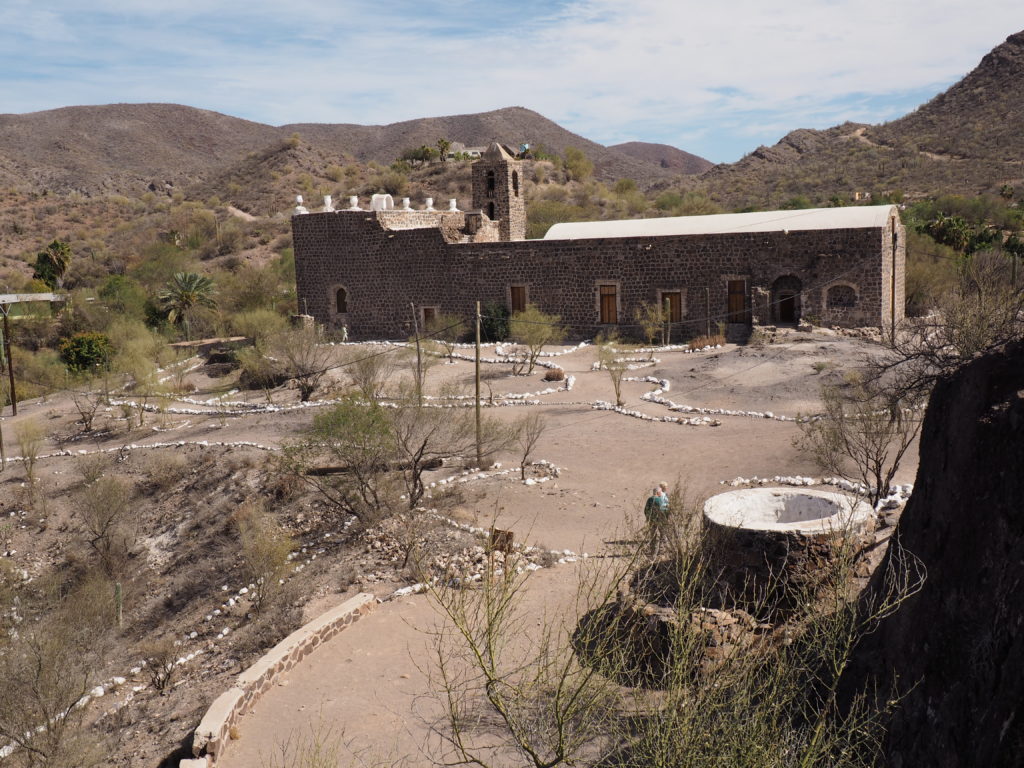
San Ignacio Mission

Once again, the Jesuits founded (in 1728) a Mission in a favorable location at an oasis in this largely desert peninsula where the native inhabitants were close at hand to be proselytized and recruited to the work of the Mission. In addition to being quite well preserved, a distinction of San Ignacio is that it bears the traces not only of Jesuit architecture, but of the successor religious orders which took on the Missions after the Jesuits were evicted by the Spanish government around 1768 (accused of accumulating wealth and power, not without basis).
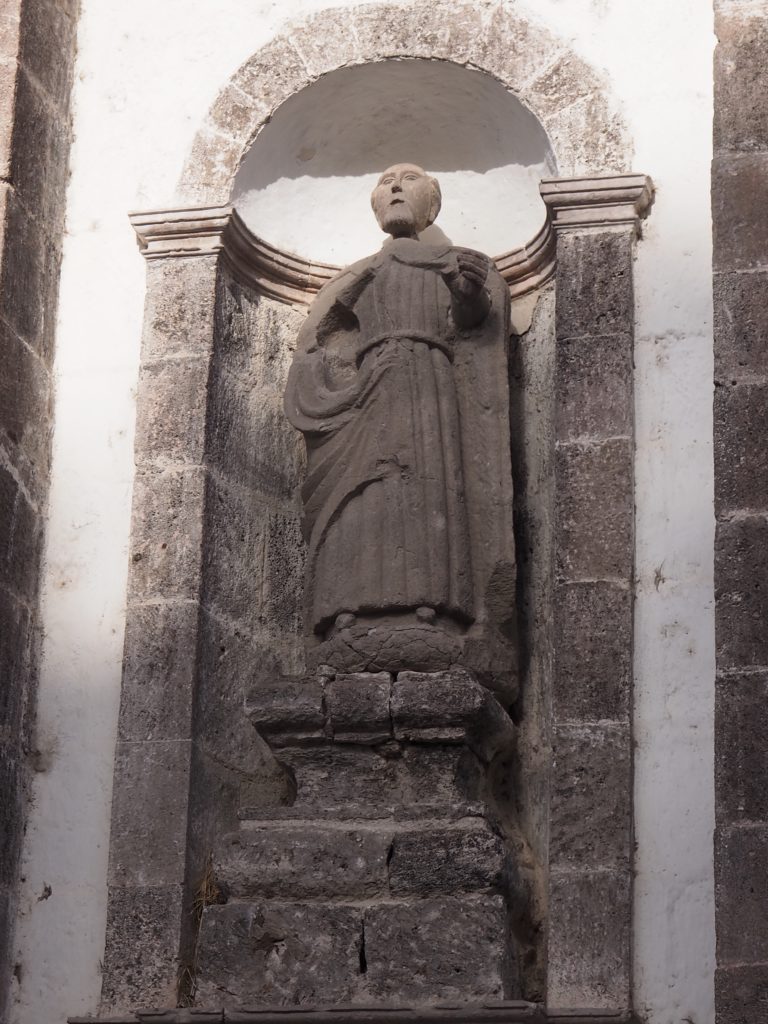
When the Franciscan Order took over the Jesuit Missions of Baja California, they added their own touches such as this statuary representation of a Franciscan wearing the rough garment and cord around the waist adopted by St. Francis when he took his vow of poverty. Of course, poverty does not preclude vanity.
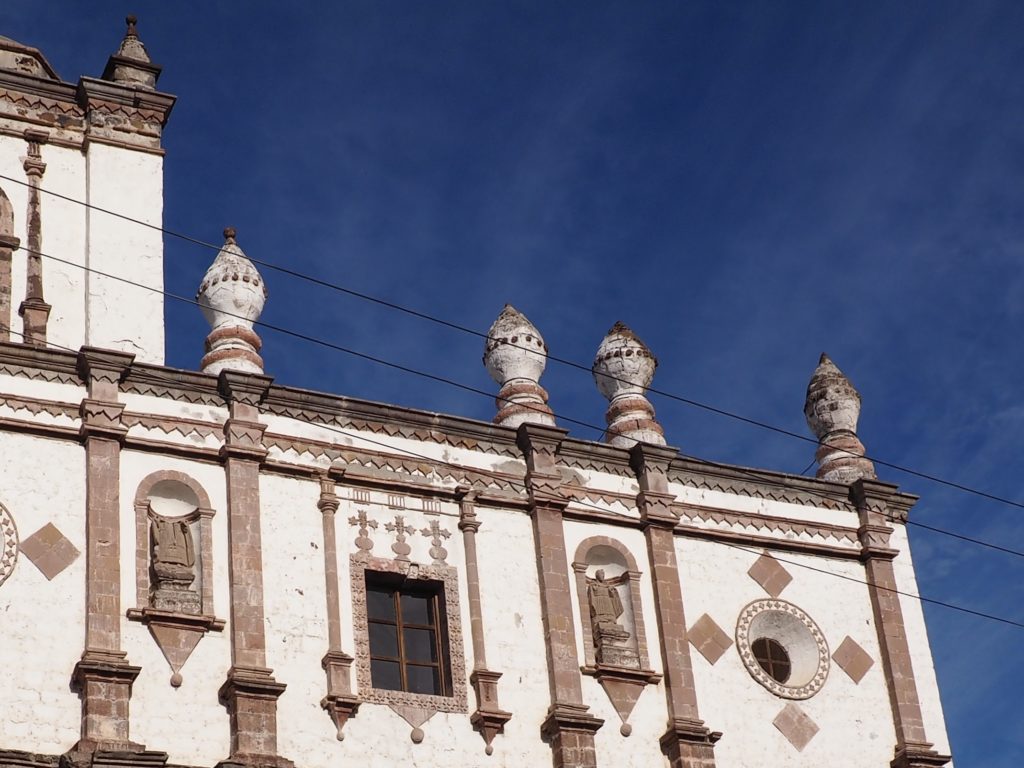
The Dominican Order took over this particular Mission after the Franciscans lost interest and added the distinctively shaped structures on the roof line (or so we were told). However, the Dominicans were not new to Baja, having arrived in 1722. The Missionary Era ended in 1843.

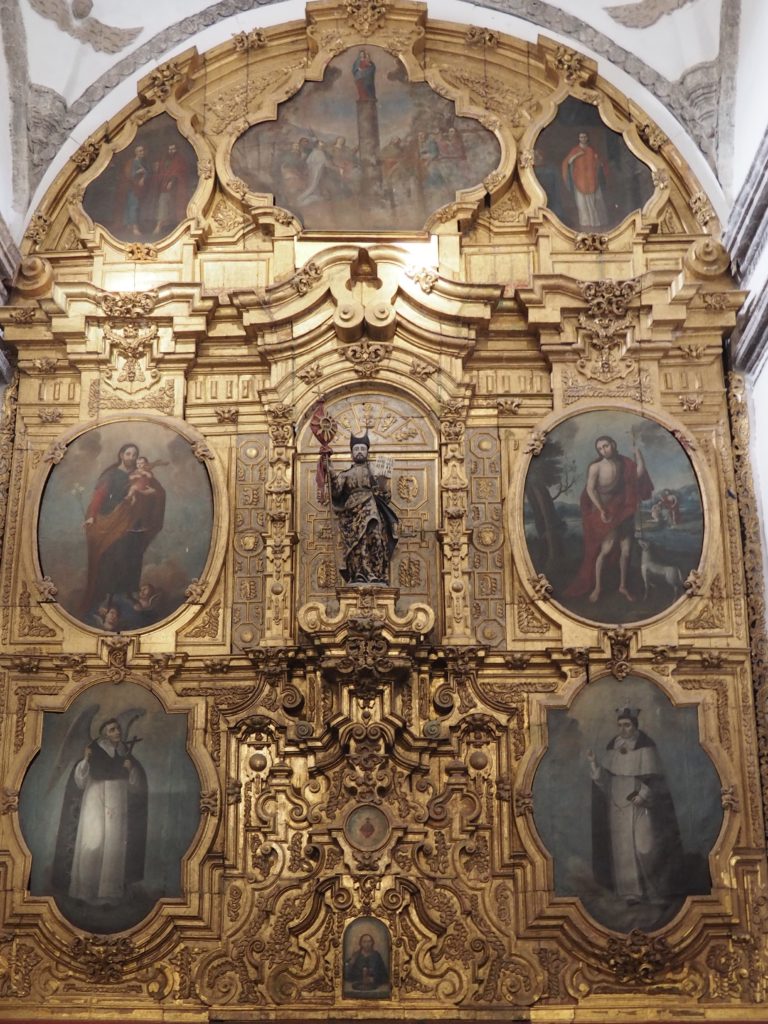
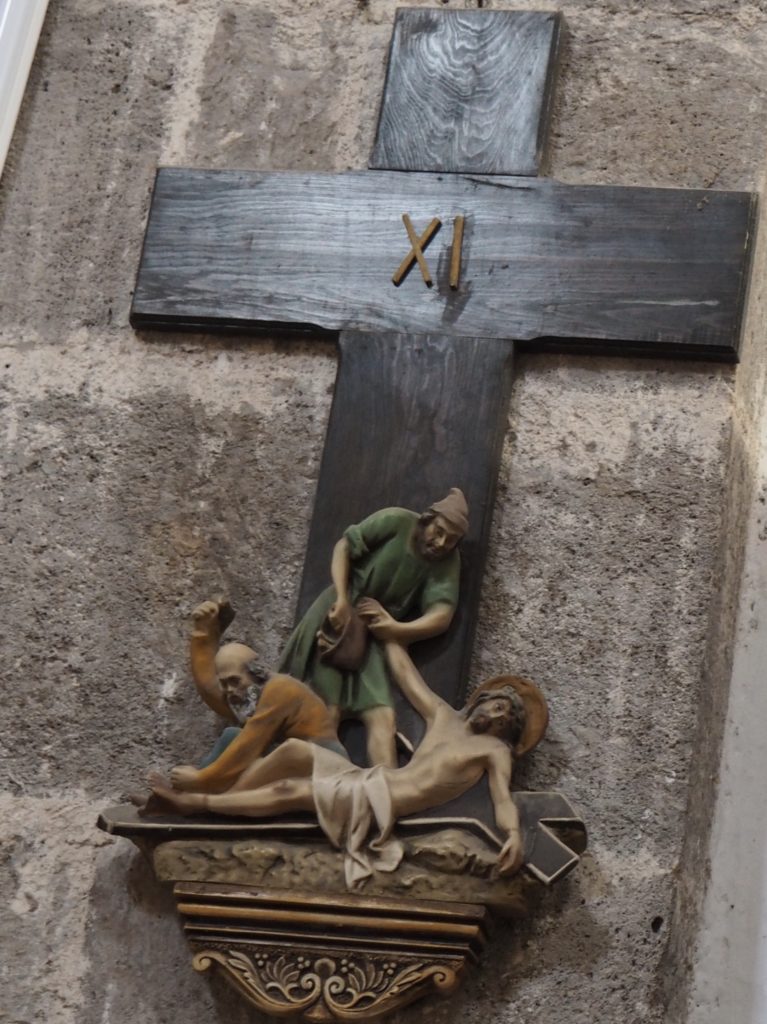
One of the Stations of the Cross 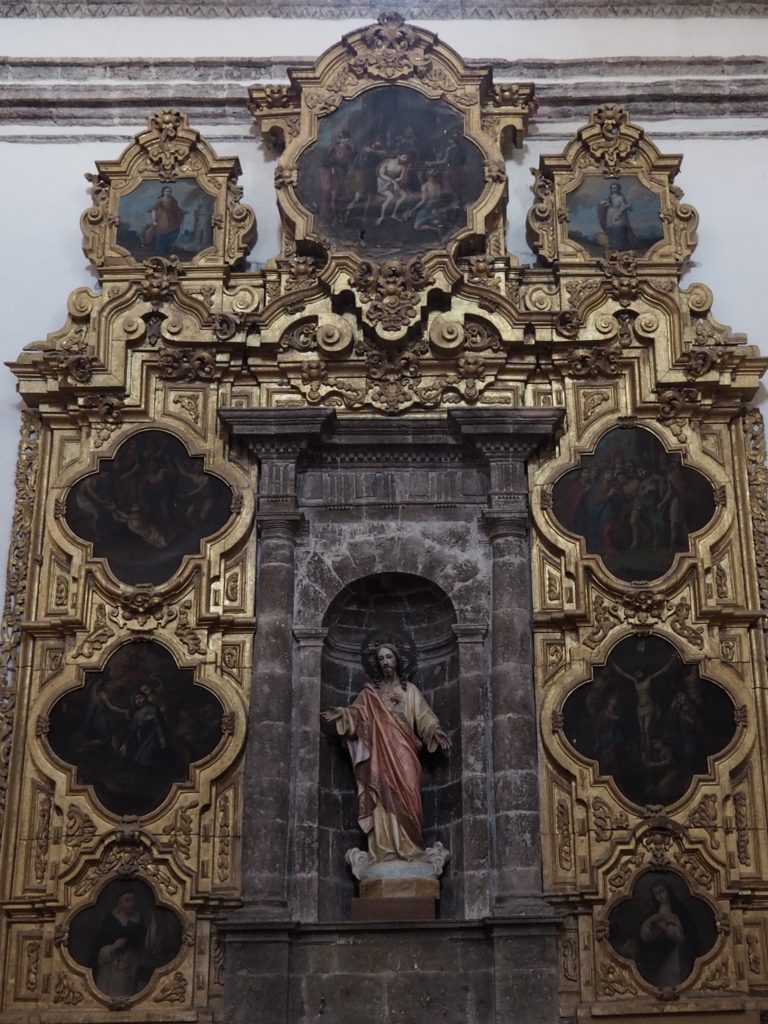
Interior, San Ignacio Mission


